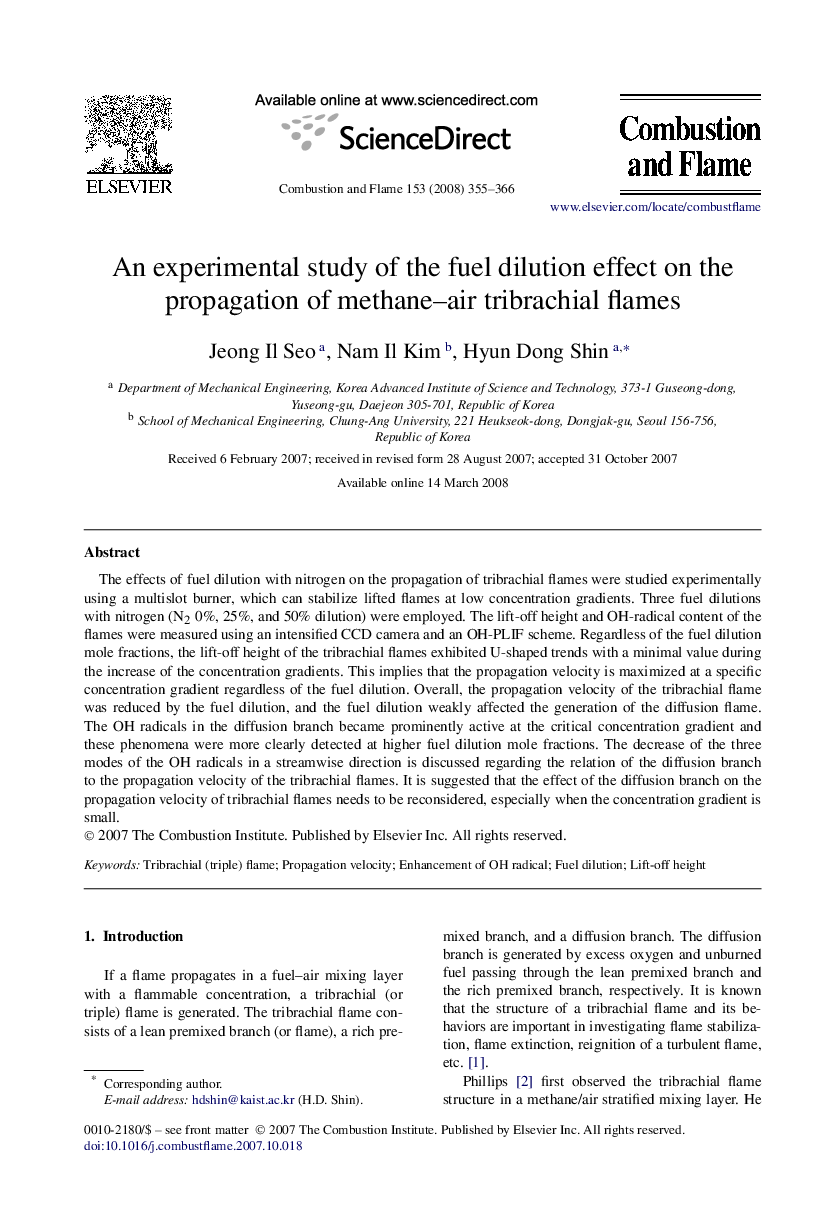| Article ID | Journal | Published Year | Pages | File Type |
|---|---|---|---|---|
| 170037 | Combustion and Flame | 2008 | 12 Pages |
The effects of fuel dilution with nitrogen on the propagation of tribrachial flames were studied experimentally using a multislot burner, which can stabilize lifted flames at low concentration gradients. Three fuel dilutions with nitrogen (N2 0%, 25%, and 50% dilution) were employed. The lift-off height and OH-radical content of the flames were measured using an intensified CCD camera and an OH-PLIF scheme. Regardless of the fuel dilution mole fractions, the lift-off height of the tribrachial flames exhibited U-shaped trends with a minimal value during the increase of the concentration gradients. This implies that the propagation velocity is maximized at a specific concentration gradient regardless of the fuel dilution. Overall, the propagation velocity of the tribrachial flame was reduced by the fuel dilution, and the fuel dilution weakly affected the generation of the diffusion flame. The OH radicals in the diffusion branch became prominently active at the critical concentration gradient and these phenomena were more clearly detected at higher fuel dilution mole fractions. The decrease of the three modes of the OH radicals in a streamwise direction is discussed regarding the relation of the diffusion branch to the propagation velocity of the tribrachial flames. It is suggested that the effect of the diffusion branch on the propagation velocity of tribrachial flames needs to be reconsidered, especially when the concentration gradient is small.
